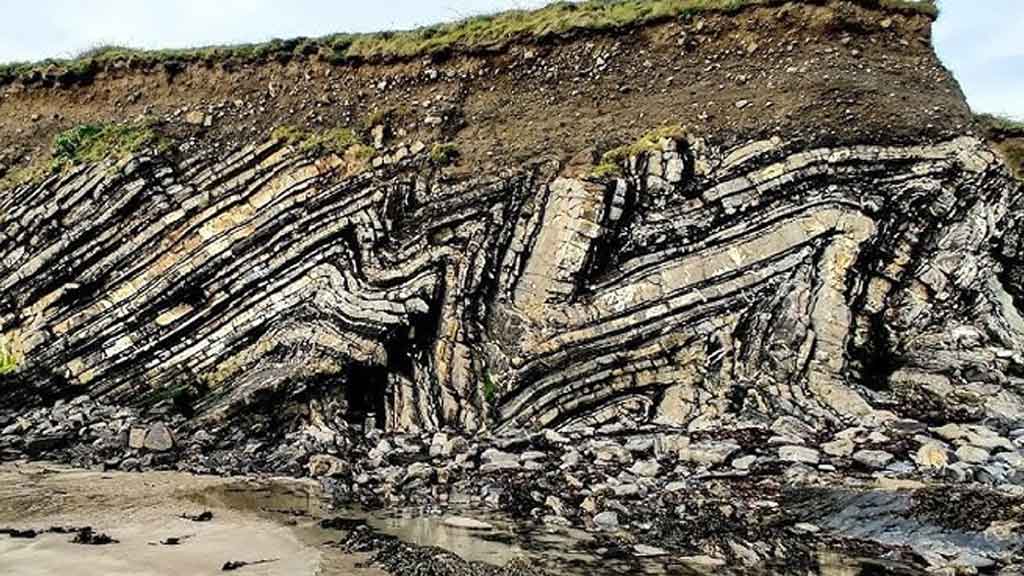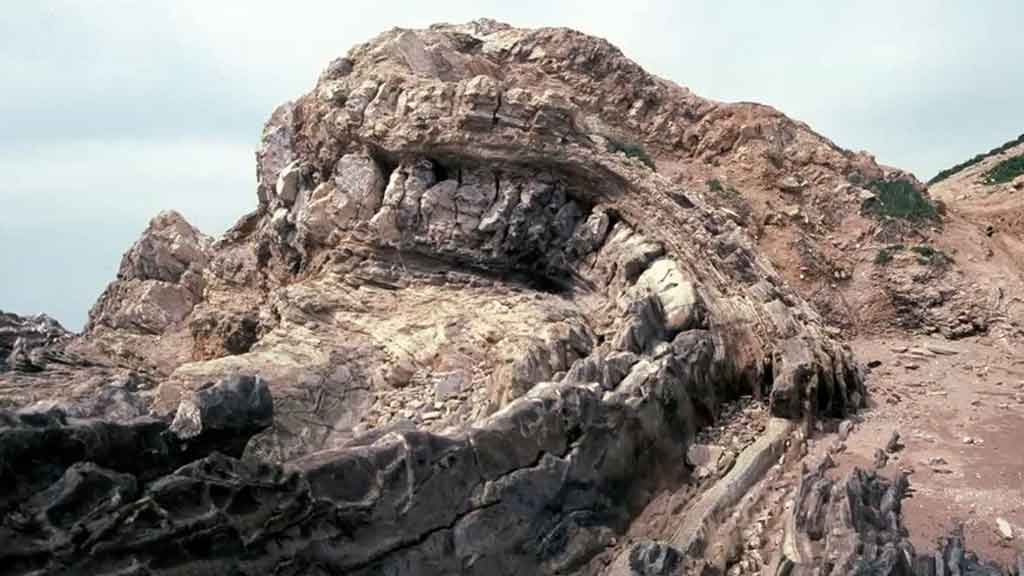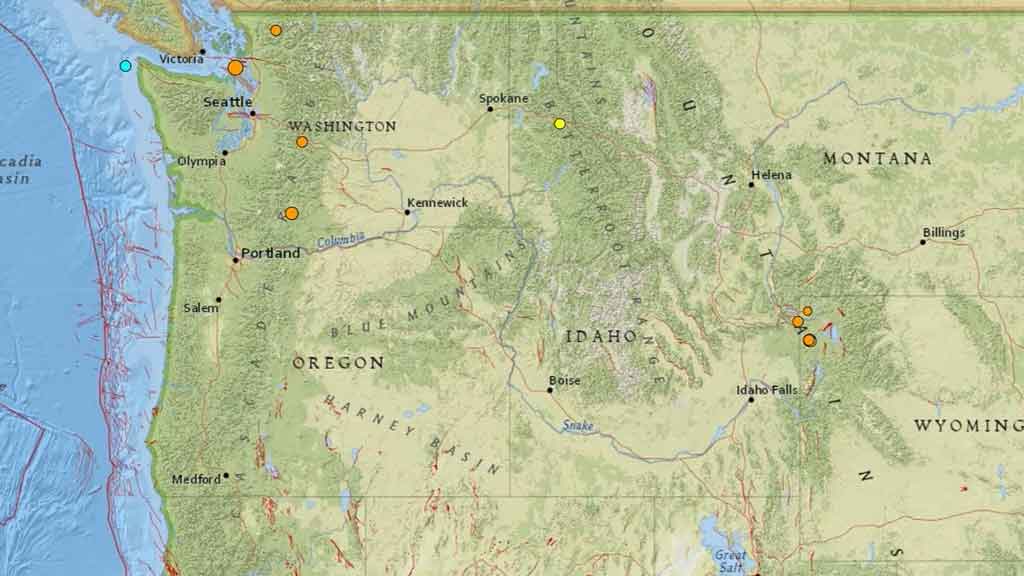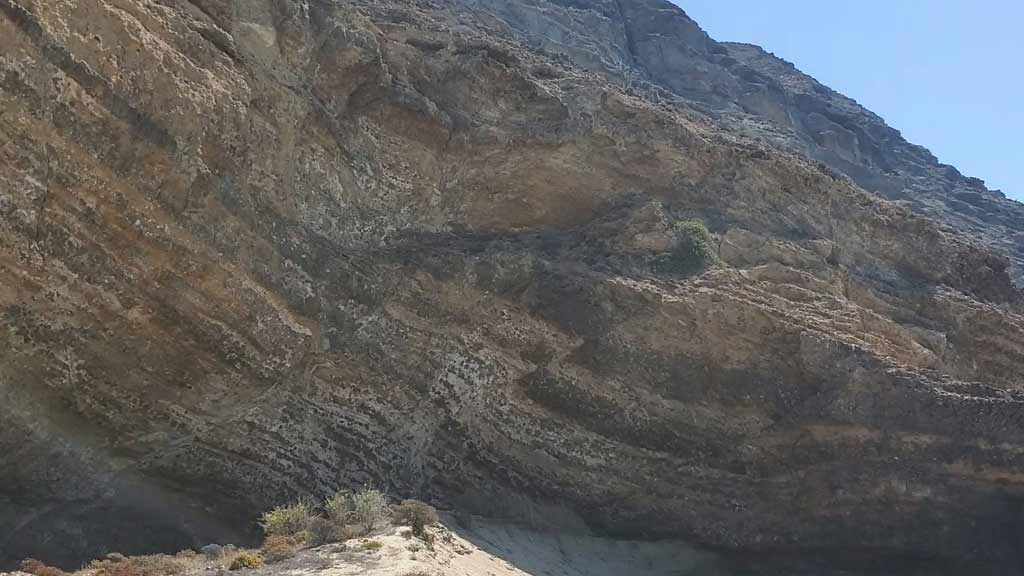While Massachusetts may not be commonly associated with seismic activity, the presence of fault lines beneath its surface highlights the dynamic nature of the state’s geological landscape.
These fault lines, though less prominent than those found in more tectonically active regions, have the potential to influence seismic events and shape the terrain over time.
Understanding the types and characteristics of fault lines in Massachusetts is essential for assessing seismic hazards and ensuring the resilience of communities in the face of potential earthquakes.
From ancient basement faults to more recent intraplate fractures, each fault line contributes to the complex geological history of the state, offering valuable insights into its formation and evolution.
What Are Fault Lines?
Fault lines are fractures or cracks in the Earth’s crust where movement occurs. These movements can be vertical, horizontal, or combined, resulting from tectonic forces within the Earth’s lithosphere.
Fault lines are typically formed by the buildup of stress along existing weaknesses in the rock, eventually causing it to fracture and shift. When movement along a fault line occurs suddenly, it can result in an earthquake.
Fault lines come in various types, including normal faults where one block of rock moves downward relative to the other, reverse faults where one block is pushed upward, and strike-slip faults where blocks slide past each other horizontally.
Understanding fault lines is essential for assessing seismic hazards and mitigating earthquake risks. Through monitoring and research, scientists aim to understand fault behavior better and improve preparedness for seismic events.
Fault Lines In Massachusetts
Massachusetts lacks fault lines while not as well-known for seismic activity as some other regions. Though less prominent, these geological features have shaped the landscape and can potentially influence seismic events in the state.
Here are five types of fault lines found in Massachusetts:
Normal Faults

Normal faults occur when the crust is being extended, causing one block to move downward relative to the other. In Massachusetts, normal faults are relatively rare but can be found in areas where the Earth’s crust is undergoing tensional forces, such as along the eastern margin of the state.
Thrust Faults
Thrust faults are formed when one block of rock is pushed up and over the other, typically due to compressional forces in the Earth’s crust.
While less common in Massachusetts than in other tectonically active regions, thrust faults can still be found in certain areas, particularly in regions where mountain-building processes have occurred.
Strike-Slip Faults

Strike-slip faults occur when two blocks of rock slide past each other horizontally, with little to no vertical movement.
While Massachusetts is not located near a tectonic plate boundary where strike-slip faults are most common, small-scale strike-slip faults can still exist within the state, contributing to localized seismic activity.
Blind Thrust Faults
Blind thrust faults are similar to thrust faults but do not extend to the Earth’s surface, making them more challenging to detect.
These faults can pose a significant seismic hazard, as they have the potential to generate large earthquakes despite their hidden nature.
While not as well-documented as in other regions, blind thrust faults may exist in Massachusetts and could influence seismic risk assessments.
Intraplate Faults

Intraplate faults are located within a tectonic plate rather than along its boundaries and are less common than interplate faults. In Massachusetts, intraplate faults may be associated with ancient fault zones reactivated by tectonic stress or other geological processes.
While generally less active than interplate faults, intraplate faults still have the potential to produce seismic events of varying magnitudes.
Reverse Faults

Reverse or thrust faults occur when compressional forces cause one block of rock to move upward relative to the other.
While less common in Massachusetts, reverse faults can be found in regions where tectonic compression has occurred, such as along the edges of mountain ranges or in areas of regional uplift.
Basement Faults

Basement faults are deep-seated fractures in the Earth’s crust that extend into the underlying basement rocks.
These faults may not be readily apparent at the surface but can influence the movement of overlying rock layers and contribute to seismic activity.
In Massachusetts, basement faults may shape the state’s geological landscape and seismic characteristics.
Seismic Zones
Seismic zones are areas where the Earth’s crust is more prone to seismic activity due to faults or other geological structures.
While Massachusetts is not located in a highly active seismic zone like California or the Pacific Northwest, it still experiences occasional earthquakes, primarily associated with faults and fractures in the crust.
Paleoseismic Studies
Paleoseismic studies investigate past seismic events by analyzing geological evidence, such as fault scarps, liquefaction features, and displaced sediment layers.
In Massachusetts, paleoseismic studies help researchers understand the history of seismic activity in the region, identify potential fault sources, and assess earthquake hazards.
Seismic Risk Assessment
Seismic risk assessment involves evaluating the potential impact of earthquakes on human populations, infrastructure, and the environment.
In Massachusetts, seismic risk assessments consider factors such as fault locations, historical seismic activity, building codes, and emergency preparedness measures to mitigate future earthquakes’ impacts and ensure communities’ safety and resilience.
FAQs
Are there different types of fault lines in Massachusetts?
Yes, fault lines in Massachusetts can vary in type, including normal faults, thrust faults, strike-slip faults, and others. Each type of fault line results from different geological processes and can influence seismic hazards differently.
Do fault lines in Massachusetts pose seismic risks?
While the risk of large earthquakes in Massachusetts is relatively low compared to other regions, fault lines can still pose seismic risks. Seismic hazards associated with fault lines include the potential for ground shaking, surface rupture, and infrastructure displacement.
How are fault lines in Massachusetts monitored?
Fault lines in Massachusetts are monitored using various techniques, including seismometers, GPS technology, and geological surveys. These monitoring efforts help scientists understand fault behavior, detect seismic activity, and assess regional earthquake hazards.
What measures can be taken to mitigate seismic risks from fault lines in Massachusetts?
Mitigating seismic risks from fault lines in Massachusetts involves implementing building codes, land-use planning strategies, and emergency preparedness measures.
These measures help reduce the vulnerability of infrastructure and communities to earthquakes and improve resilience in the face of seismic events.
Are there historical records of earthquakes associated with fault lines in Massachusetts?
Historical records indicate that Massachusetts has experienced earthquakes associated with fault lines, although they are relatively rare and typically of low to moderate magnitude. Studying historical earthquakes helps scientists identify active fault lines and assess seismic hazards in the region.
Conclusion
While fault lines in Massachusetts may not garner as much attention as those in earthquake-prone regions, they nevertheless play a significant role in shaping the state’s geological and seismic characteristics.
By studying these fault lines and their associated features, researchers gain a deeper understanding of Massachusetts’ geological history and seismic potential.
While the risk of large earthquakes may be relatively low compared to other parts of the country, residents, policymakers, and emergency responders must remain vigilant and prepared for seismic events.
Through ongoing research, monitoring, and preparedness efforts, Massachusetts can continue to mitigate the impacts of earthquakes and ensure the safety and resilience of its communities now and in the future.
Jaclyn Lowe